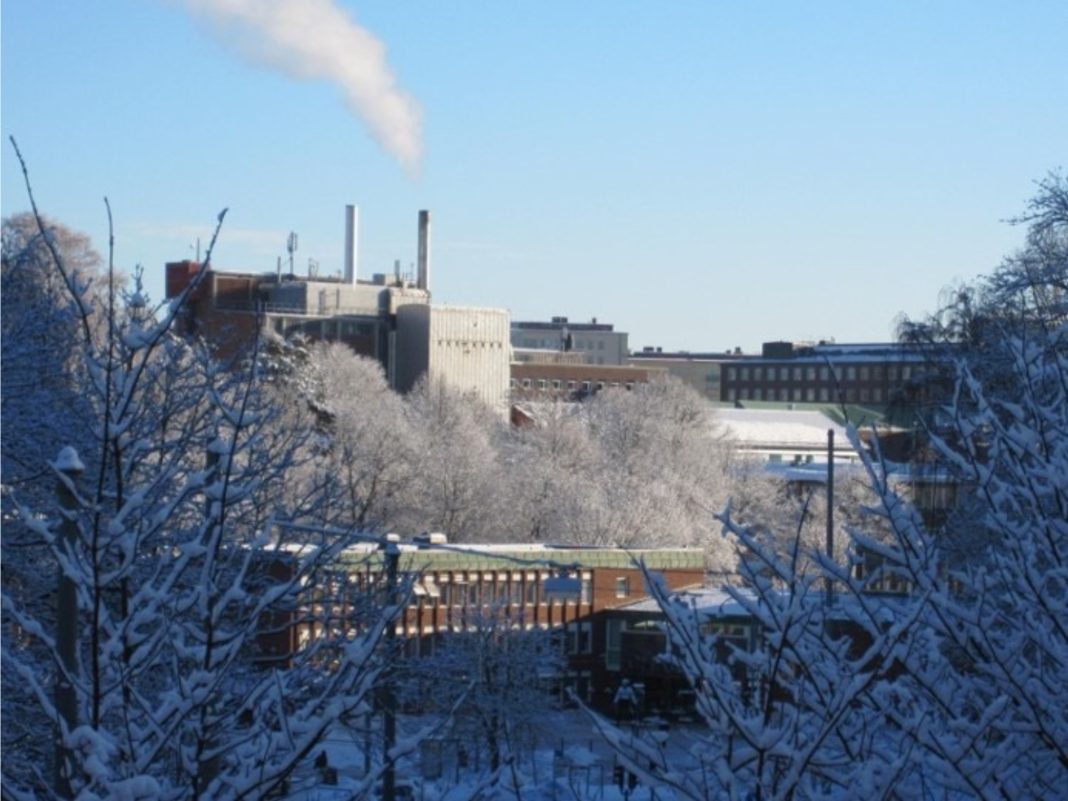Filip Johnsson and Henrik Thunman from Chalmers University of Technology perform collaborative research for developing circular plastics systems that can contribute to long-term sustainable use of plastics, while simultaneously reduce the presence of plastics in nature
The presence of large amounts of plastic in the world’s oceans is a growing problem, and current collection and recycling systems are inadequate. Yet society is heavily reliant on plastics, not least in the food industry, where plastics have valuable abilities to protect food, contribute to long shelf life, and reduce food waste. Chalmers University of Technology, together with Swedish industry, performs joint research for tomorrow’s circular plastic systems.

Will the global use of plastics continue to grow?
According to the OECD, more than 400 million tonnes of plastics are produced worldwide annually. (1) Despite a series of initiatives to reduce plastics, the global use of plastics is predicted to continue growing. At the same time, it is increasingly evident that the current foundation for plastic recycling is flawed. In current thinking, the order of preference is that plastic waste should be reused, recycled, or the energy recovered through incineration.
There are several fundamental reasons why this waste hierarchy cannot solve the problems associated with the widespread use of plastics:
- Plastics that are recycled progressively lose their value and eventually become worthless. This means that there are a lack of natural driving forces to collect plastics, so the plastic waste instead becomes waste that has no value. This leads, among other things, to plastic waste from rich countries being exported to developing countries with unclear conditions and deleterious consequences.
- A significant amount of the collected plastic is incinerated, contributing to climate change as most plastics are made from fossil raw materials.
- Almost all recycled plastic can be used only for lower-quality products. This is because the majority of plastics are mechanically recycled through simple mechanical melting processes.
The fundamental problem is that Society allows new plastics to be produced from fossil oil or gas. This is despite the enormous amounts of plastics that are available in society, which are instead incinerated or end up in nature and landfills.
Joint research for tomorrow’s circular plastic systems
However, there exists an approach that can solve the problem and bring the plastics into a circular system, based on allowing plastic waste to be recycled by fundamentally transforming it into its original constituents. This process requires fossil-free energy – corresponding to approximately 50% of the chemically stored energy in the plastic. This process should be enabled by the possibility of taking advantage of the increasing availability of low-cost renewable electricity.
The new method is already technically and economically feasible today. Multiple tracks are well advanced in their development. An example that has been successfully demonstrated on a technical scale (several tonnes of plastic per day) at the Chalmers University of Technology is the use of gasification (see, for example, Thunman et al., 2021 and a YouTube film (2) showing how it links to the chemical industry). The technology makes it possible for existing chemical clusters, which today manufacture diverse types of plastics from fossil raw materials, to switch gradually to using plastic waste and, by adding electricity, to recover the raw material’s carbon content.
Thus, a circular plastics economy can be created today. However, to make it a reality, we need to adopt a strategy that aims to:
- Gradually introduce a policy that limits the possibility of using virgin fossil raw materials for plastics production.
- Phase out fossil raw materials in combination with applying quantitative requirements for an increasing proportion of recycled raw materials in new plastic products.
- Gradually phase out, and eventually ban, the incineration of plastics (even if it is associated with the production of electricity, heat or fuels) and
- Accelerate the transition to a fossil- free electricity system that can meet the requirements for industry electrification, including the plastics industry.
The most apparent benefit of such a strategy is that it results in existing plastics retaining their value after use. This could result in a global interest in “plastics mining”, which would successively reduce the amounts of plastics in the oceans and nature.
What should a circular plastics economy look like?
A circular plastics economy must be based on a holistic view of the use and development of Society’s carbon-based materials, as described by CañeteVela et al. (2022). This should include materials that today have a biogenic origin, such as wood, paper, and textiles, as well as materials of fossil origin, such as plastics. Bioplastics are often highlighted as candidates to replace plastics with oil.
However, a consequence of the development of bioplastics – if it is done on a larger scale – is that valuable land will need to be used to supply the material production systems with bio-based raw materials. In that case, valuable cellulose fractions produced in complicated processes would be used in short-lived products, which would eventually be incinerated.
The true recycling of plastics is the only feasible option for long-term sustainable use of plastics, while simultaneously reducing the existing problems with plastics in nature. Regions like the EU and UK stand to benefit greatly from leading the efforts towards circular plastics use, given their high level of competence with industry and, ideally, their ambition to spearhead the transition towards a fossil-free future.
References
- https://search.oecd.org/environment/waste/Policy-Highlights-Improving-Markets-for-Recycled-Plastics-Trends-Prospects-and-Policy-Response.pdf
- Long version: https://www.youtube.com/watch?v=fEPOnl8Q3PA
- Cañete Vela, I., Vilches, T.B., Berndes, G., Johnsson, F., Thunman, H., Co-recycling of natural and synthetic carbon materials for a sustainable circular economy, Journal of Cleaner Production, Volume 365, 2022, 132674, https://doi.org/10.1016/j.jclepro.2022.132674
- Thunman, H., Vilches, T.B., Seemann, M., Maric, J., Cañete Vela, I., Pissot, S., Nguyen, H. N. T., Circular use of plastics-transformation of existing petrochemical clusters into thermochemical recycling plants with 100% plastics recovery, Sustainable Materials and Technologies, Volume 22, 2019, https://doi.org/10.1016/j.susmat.2019.e00124

This work is licensed under Creative Commons Attribution-NonCommercial-NoDerivatives 4.0 International.


